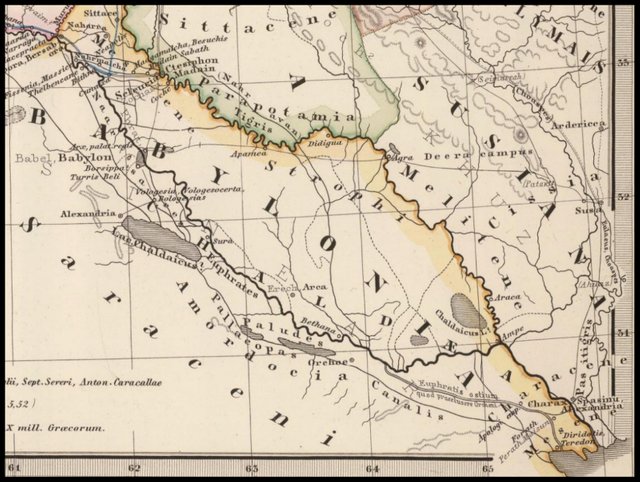
The Restoration of Ancient History is a paper delivered in November 1994 by Gunnar Heinsohn, Professor Emeritus at the University of Bremen in Germany, at a symposium in Portland, Oregon. This paper questions the conventional chronology of ancient history and offers in its place a radical reconstruction—the so-called Short Chronology, of which Heinsohn is the principal architect. In this series of articles, we are taking a closer look at the evidence cited in this paper in favour of Heinsohn’s new chronology:
Heinsohn recognizes four periods in the history of Mesopotamia before the conquests of Alexander the Great:
| Dates BCE | Upper Mesopotamia | Lower Mesopotamia |
|---|---|---|
| 540-330 | Persian Empire | Persian Empire |
| 620-540 | Empire of the Medes | Second Chaldaeans |
| 750-620 | Assyrian Empire | Assyrian Empire and Scythians |
| 1150-750 | Early Assyrians | First Chaldaeans |
In this article we will examine Part 5 of Heinsohn’s lecture: Reconnecting Occidental and Oriental Progress of Civilization. Here, Occidental (ie western) refers to the Classical Greeks, and Oriental to the civilizations of Mesopotamia. In this section of his lecture, Heinsohn is addressing the disconnect between what the Classical historians tell us of Lower Mesopotamia (Chaldaea and Babylonia) and what modern archaeologists tell us:
Though the ancient Greeks freely admitted that their science teachers were Chaldaeans (from Southern Mesopotamia/Babylonia), they never gave any hint that they trailed their inspirators by one-and-a-half millennia. They rather gave the impression that Chaldaean knowledge was obtainable by traveling Greek students. Today, we are taught that there were no Chaldaean teachers to speak of. This supposedly most learned nation of mankind, did not leave us bricks or potsherds, not to mention written treatises. Yet, modern scholars also teach us that there is one grain of truth in the Greek tradition. The teachers of humanity did indeed derive from Southern Mesopotamia/Babylonia. However-though they lived in the very territory of the Chaldaeans, where the Chaldaeans are missing-they were not Chaldaeans but Sumerians, and the Greeks had never heard of them: When their poleis (city-states) began culturally to blossom in the early -6th century, the wise men of Sumeria had already met their fate 1,500 years earlier. Nevertheless, researchers before 1868—when Jules Oppert created the term Sumerian—had called proto-Chaldaean that [which] today is called Sumerian. Up to the end of the l9th century, art historians labeled as Chaldaean artifacts which today are called Sumerian artifacts. At the turn of the century, major European museums underwent a relabeling procedure from Chaldaean to Sumerian on their exhibition pieces from Southern Mesopotamia. (Heinsohn V)
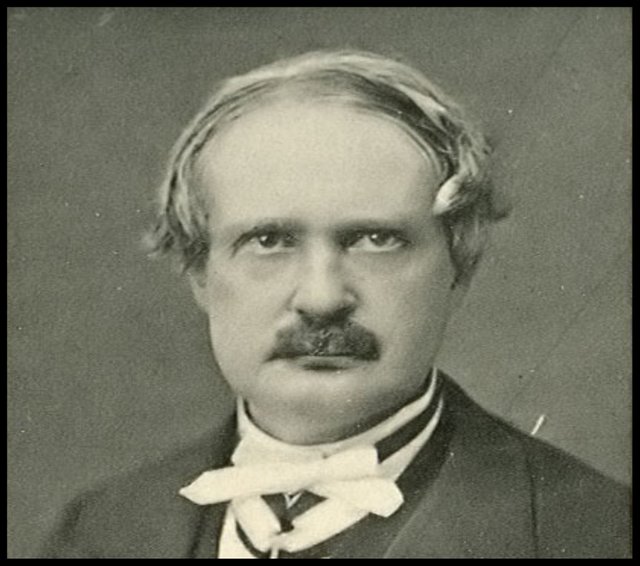
Julius or Jules Oppert was an Assyriologist who made valuable contributions to the decipherment of Mesopotamian cuneiform in the 1850s. In 1869, the same year in which he was appointed instructor in Assyriology at the Collège de France, he proposed the name Sumérien [Sumerian] for the oldest of the languages that were written in cuneiform script. Heinsohn’s thesis is that the people whom modern archaeologists call Sumerians were actually the Chaldaeans, and the Chaldaean language spoken of by the Classical historians was the Sumerian language. Archaeologists, however, insist that the Chaldaeans were a Semitic people of Lower Mesopotamia who first arrived on the stage of Babylonian history in the 9th century BCE, long after the fall of Sumerian civilization. These Chaldaeans spoke a West-Semitic language closely related to Aramaic, or Syriac, the lingua franca of the Persian Empire.

This equation is one of the main pillars of the Short Chronology. It was the central thesis of Die Sumerer gab es nicht [The Sumerians Never Existed], which was published in 1988. In this book Heinsohn crystallized his ideas in the field of ancient chronology. Curiously, Jules Oppert came tantalizingly close to making the same connection between these “two” peoples. In 1854, long before he settled on the name Sumérien for the earliest of the cuneiform languages, he had suggested calling it Casdo-Scythian, from Kasdim, the Biblical form of Chaldaean. It was the Irish Assyriologist Edward Hincks who dissuaded him from taking this step:
When the cuneiform scripts were being studied for the first time, it was generally accepted without any debate that the Semitic inhabitants of the Mesopotamia had invented this form of writing to express their own language. On 20 October 1854, I demonstrated, in an article in L’Athenaeum français, that this assumption, then regarded as an axiom, was inadmissible. I showed that, since the same hieroglyphic characters were used to express the same ideas and the same syllables in five different languages, a single nation must have created the system. A comparative study of the words that expressed these notions excluded the possibility that this nation was of Semitic origin, but indicated in a manner that left no room for doubt that they were of Turanian [ie Ural-Altaic] origin. What name should be given to this people representing an ancient civilization? I proposed, for lack of a better, to call the language Casdo-Scythian or Casdian, from the Hebrew word Kasdim, Chaldaea. The suggested name was, I admit, a poor choice, and I was the only scholar adopted it. Mr Rawlinson proposed the word chamitique, which he later replaced with Chaldaean or Proto-Chaldaean. Let us not dispute the value of these terms, which that great British scholar still employs, and with him a few other English scholars.
In July 1855, I had, for the only time in my life, the good fortune of meeting Hincks. He rejected—and not without reason—the terms of Casdo-Scythian and Chaldaean. He suggested the term Akkadian, basing this on the following consideration: Each of the kings of Mesopotamia adopted, in addition to his principal title, the subsidiary title of King of the Sumers and the Akkads or King of Sumer and Akkad. It was probable, then, that one of these two peoples was the inventor of the cuneiform writing. Hincks suggested that of Akkad, because this name is in the Bible. (Oppert 1-2)
Oppert disagreed with Hincks and adopted the name Sumérien [Sumerian] for the language. I will not repeat the complicated story of how Oppert’s Sumerian finally came to be universally adopted as the name for the earliest of the cuneiform languages, while Hincks’ Akkadian was adopted for the East-Semitic language of the Babylonians and Assyrians.
Note that the Englishman Henry Creswicke Rawlinson—a politician-turned-Assyriologist—actually hit upon the correct name for the Sumerian language. It was quite natural to identify the creators of cuneiform writing with the Chaldaeans of the Classical historians. Like Oppert, he too suspected that the Chaldaeans were a Scythian people, though he never considered the case closed on this point (Henry Rawlinson 260, 265 and Athenaeum 8 December 1855). Unfortunately, he was overruled by his peers and it took another century-and-a-half before the error was corrected by Gunnar Heinsohn.
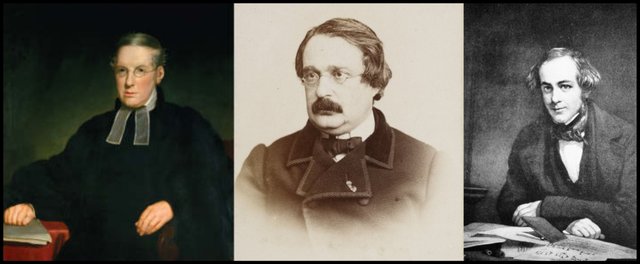
Heinsohn’s ingenious equation solves several conundrums.
The Rise of Civilization
The Classical historians never mention the Sumerians. Herodotus, it seems, never heard of this remarkable people, even though they are alleged to have laid the foundations of Mesopotamian civilization. And although they had been displaced by later nations, their language was still in use in his day.
Diodorus Siculus does not mention the Sumerians, but he describes the Chaldaeans as belonging to the most ancient inhabitants of Babylonia (Oldfather 445).
Even Berossus, the Chaldaean priest of the 3rd century BCE, who was commissioned by the Seleucid King Antiochus I Soter to write a history of Babylonia, fails to mention the Sumerians. In his Babyloniaca, the earliest kings of Babylonia, who are said to have reigned before the Flood, are described as Chaldaeans (Burstein 19).
The answer to this conundrum should be obvious to the reader. The Classical historians did know about the ancient “Sumerians” and they did mention them. They simply referred to them by another name: the Chaldaeans.
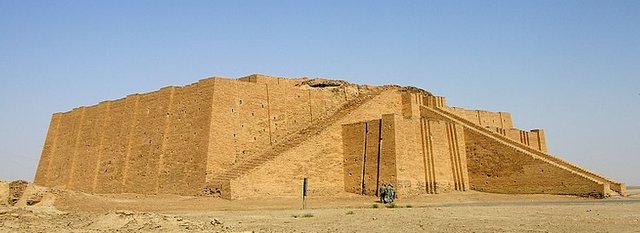
Ur of the Chaldees
In the Book of Genesis, we are told that Abraham came from a city called Ur of the Chaldees (אור כשדים, Ur Kasdim):
And Terah took Abram his son, and Lot the son of Haran his son’s son, and Sarai his daughter in law, his son Abram’s wife; and they went forth with them from Ur of the Chaldees, to go into the land of Canaan; and they came unto Haran, and dwelt there. And the days of Terah were two hundred and five years: and Terah died in Haran ... and Abram was seventy and five years old when he departed out of Haran. And Abram took Sarai his wife, and Lot his brother’s son, and all their substance that they had gathered, and the souls that they had gotten in Haran; and they went forth to go into the land of Canaan; and into the land of Canaan they came. (Genesis 11:31 ...12:4-5)
This is the famous “Sumerian” city of Ur in Lower Mesopotamia. It is named for the Chaldees because the Chaldees are the so-called Sumerians. This seems obvious to those of us who agree with Heinsohn.
Incidentally, there is a hypothesis that Ur of the Chaldees was actually the city of Urhai—also known as Edessa and Urfa—in what is now southern Turkey, close to the Syrian border. According to this hypothesis, the route Abraham takes from Ur to Canaan supports this identification. Haran, or Carrhae, also lies in southern Turkey, close to the Syrian border. It makes no sense to pass through Haran if one is journeying from the Sumerian city of Ur in Lower Mesopotamia to Canaan.
My response to this is that the story in Genesis 11-12 is a conflation of two accounts of differing age. The oldest tradition simply recorded that Abraham came from the “Sumerian” city of Ur, or Ur of the Chaldees, and settled in Canaan. It was another scholar who elaborated on this myth at a much later time—when the “Sumerian” city of Lower Mesopotamia had been abandoned due to climate change. This later scholar, therefore, did not know where Ur of the Chaldees was. Looking at a contemporary map, he misidentified it with the northern Ur, which was still extant. In fact, Urfa is still inhabited to this day.
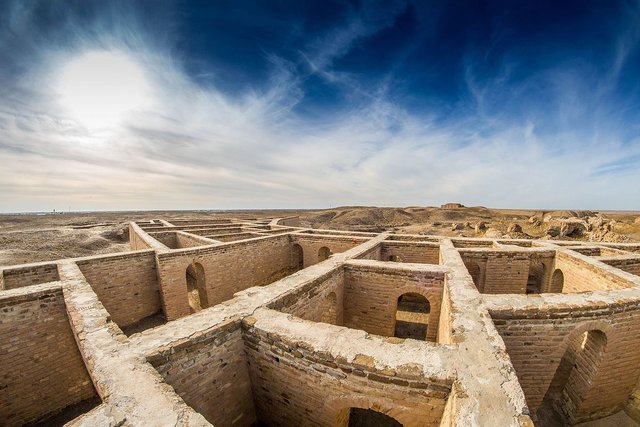
Extinction or Survival
In the conventional chronology, the history of the Sumerian language spans more than a millennium:
| Period | Conventional Dates BCE |
|---|---|
| Archaic Sumerian | 3100–2500 |
| Old or Classical Sumerian | 2500–2300 |
| Neo-Sumerian | 2300–2000 |
| Late Sumerian | 2000–1700 |
| Post-Sumerian | 1700– |
Sumerian continued to be used as a sacred, ceremonial, literary and scientific language in Akkadian-speaking Mesopotamian states such as Assyria and Babylonia until the 1st century AD ... The term “Post-Sumerian” is meant to refer to the time when the language was already extinct and preserved by Babylonians and Assyrians only as a liturgical and classical language for religious, artistic and scholarly purposes ... The extinction has traditionally been dated approximately to the end of the Third Dynasty of Ur, the last predominantly Sumerian state in Mesopotamia, about 2000 BC. However, that date is very approximate, as many scholars have contended that Sumerian was already dead or dying as early as around 2100 BC, by the beginning of the Ur III period, and others believe that Sumerian persisted, as a spoken language, in a small part of Southern Mesopotamia (Nippur and its surroundings) until as late as 1700 BC. (Wikipedia)
Is this really credible? Would a language that had perhaps become extinct as early as 2100 BCE continue to be used in rituals for a further two thousand years? And if it did survive to the 1st century of the Christian era, why is it that none of the Classical writers mention it? According to Heinsohn’s chronology, however, the so-called Neo-Sumerians, who are conventionally dated to the 22nd and 21st centuries BCE, were actually contemporaries of the Medes in the 7th and 6th centuries:
If we leave unscholarly dating systems aside, and resort to comparative stratigraphy, we will immediately recognize the contemporaneity of the early Greek city-states and the so-called Neo-Sumerians, who thereby are outed as the painfully-missing Chaldaeans. “Neo-Sumerian” Chaldaeans and early -6th century poleis alike, are found merely two strata-groups below Hellenism. This still leaves a head start for Chaldean scholarship. Yet, it is not measured by millennia or centuries, but by decades at most. (Heinsohn)
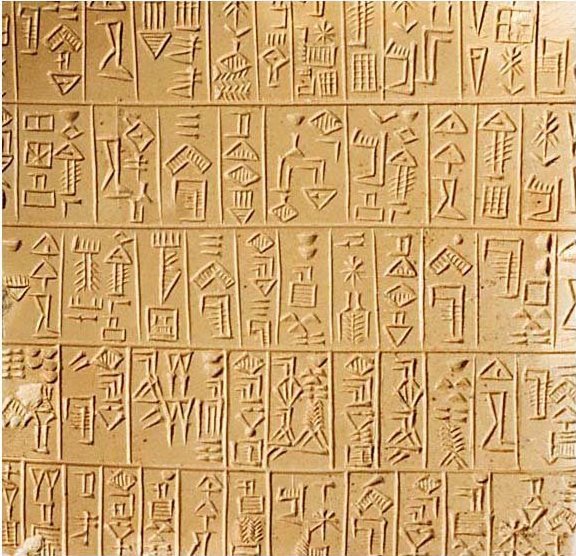
The Cities of the Chaldaeans
According to conventional history, the Chaldaeans first migrated into Lower Mesopotamia no earlier than the middle of the 10th century. They are first mentioned in the annals of the Neo-Assyrian Emperor Shalmaneser III, dated to about 850 BCE. They took no part in the glorious flowering of Mesopotamian civilization that is said to have spanned a period of several millennia before their arrival on the scene. But in the annals of Sennacherib, a Neo-Assyrian Emperor who lived around 700 BCE, we learn that the Chaldaeans had seventy-five strong, walled cities:
In my first campaign I accomplished the defeat of Merodach-baladan, king of Babylonia, together with the army of Elam, his ally, in the plain of Kish. In the midst of that battle he forsook his camp, and made his escape alone; (so) he saved his life. The chariots, horses, wagons, mules, which he left behind at the onset of battle, my hands seized. Into his palace, which is in Babylon, joyfully I entered. I opened his treasure-house: gold, silver, vessels of gold and silver, precious stones of every kind (name) goods and property without limit (number), heavy tribute, his harem, (his) courtiers and officials, singers, male and female, all of his artisans, as many as there were, the servants of his palace, I brought out, I counted as spoil. In the might of Assur my lord, 75 of his strong walled cities, of Chaldea, and 420 small cities of their environs (within their borders), I surrounded, I conquered, their spoil I carried off. (Luckenbill 116)
According to the conventional chronology, then, the Chaldaeans are first heard of in Lower Mesopotamia in 850 BCE, and by 700 BCE they have 75 strong, walled cities and 420 small cities. That is quite a spectacular rise to power.
In Emmet Sweeney’s model of the Short Chronology, Shalmaneser III is identified with the Emperor of the Medes Cyaxares II, who flourished around 600 BCE, while Sennacherib is identified with the Persian Emperor Xerxes I, who flourished around 450 BCE. In the conventional chronology, it was only after 500 BCE that Ur was finally abandoned. Eridu, the earliest and southernmost of the “Sumerian” cities was abandoned after 600 BCE. Many of the more northerly cities—Kish, Nippur, Girsu, Uruk, Larsa—were still inhabited during the Achaemenid Era (Persian Empire).
What else, then, can Sennacherib’s 75 strong walled cities, of Chaldaea be referring to but the ancient cities of the so-called Sumerians?
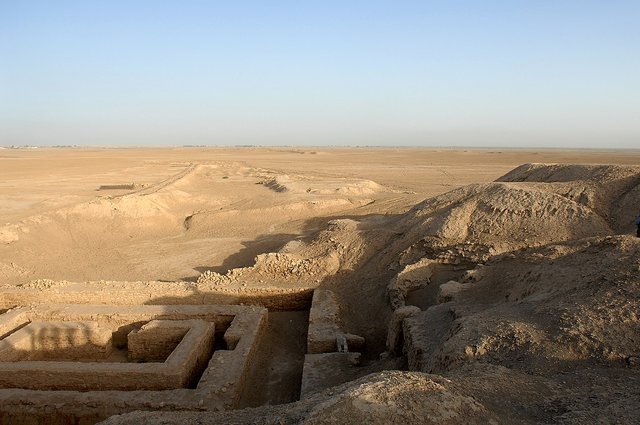
And that’s a good place to stop.
References
- Stanley Mayer Burstein, The Babyloniaca of Berossus, Sources from the Ancient Near East, Volume 1, Fascicle 5, Undena Publications, Malibu, CA (1978)
- Gunnar Heinsohn, Catastrophism, Revisionism, and Velikovsky, in Lewis M Greenberg (editor), Kronos: A Journal of Interdisciplinary Synthesis, Volume 11, Number 1, Kronos Press, Deerfield Beach, FL (1985)
- Gunnar Heinsohn, The Restoration of Ancient History, Mikamar Publishing, Portland, OR (1994)
- Gunnar Heinsohn, Die Sumerer gab es nicht [The Sumerians Never Existed], Frankfurt (1988)
- Gunnar Heinsohn, Heribert Illig, Wann lebten die Pharaonen? [When Did the Pharaohs Live?], Eichborn Verlag, Frankfurt (1990)
- Gunnar Heinsohn, M Eichborn, Wie alt ist das Menschengeschlecht? [How Old Is Mankind?], Mantis Verlag, Gräfelfing, Munich (1996)
- William Kennett Loftus, Travels and Researches in Chaldæa and Susiana, Robert Carter & Brothers, New York (1857)
- Daniel David Luckenbill, Ancient Records of Assyria and Bablyonia, Volume 2, The University of Chicago Press, Chicago (1927)
- Charles Henry Oldfather (translator), Diodorus Siculus: The Library of History, Volume 1, Loeb Classical Library, Harvard University Press, Cambridge, MA (1946)
- Jules Oppert, Études Sumériennes, Imprimerie Nationale, Paris (1876)
- Henry Creswicke Rawlinson, The Persian Cuneiform Inscription at Behistun, Decyphered and Translated; With a Memoir on Persian Cuneiform Inscriptions in General, and on That of Behistun in Particular, The Journal of the Royal Asiatic Society of Great Britain and Ireland, Volume 10, J W Parker, London (1848)
- George Rawlinson, A Memoir of Major-General Sir Henry Creswicke Rawlinson, Longmans, Green & Co, London (1898)
- Aubrey de Sélincourt (translator), Herodotus: The Histories, Penguin Books Ltd, Harmondsworth, Middlesex (1954)
- Emmet Sweeney, The Ramessides, Medes, and Persians, Ages in Alignment, Volume 4, Algora Publishing, New York (2008)
Image Credits
- Chaldaea and Environs: Rumsey Collection, Karl Spruner von Merz, Th Menke, Atlas Antiquus, Number 27, Justus Perthes, Gotha (1865), Creative Commons License
- Jules Oppert: Public Domain
- Edward Hincks: Anonymous Oil Painting [Anne Crookshank (editor), Irish Portraits, Ulster Museum, Belfast (1965)], Manuscript Reading Room, Trinity College Dublin, Public Domain
- Julius Oppert: Carl Reutlinger (photographer), Bibliothèque Nationale de France, Département Société de Géographie, SG PORTRAIT-1443, Public Domain
- Henry Creswicke Rawlinson: Henry Wyndham Phillips (artist), Public Domain
- The Ziggurat of Ur: © Michael Lubanski, Creative Commons License
- “Abraham’s House” in Ur of the Chaldees: © Aziz1005 (photographer), Creative Commons License
- Sumerian Cuneiform: Schøyen Collection MS 3029, Public Domain
- The Ruins of Uruk: © SAC Andy Holmes (RAF) (photographer), Open Government Licence
Online Resources
